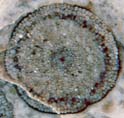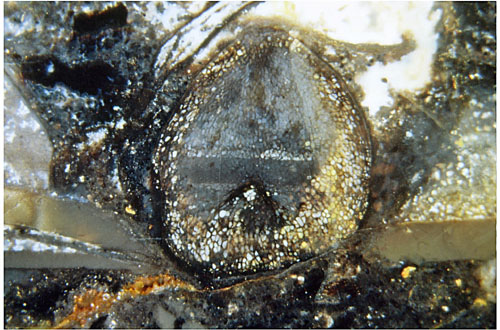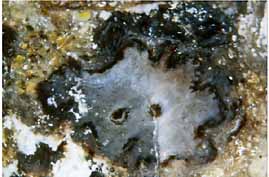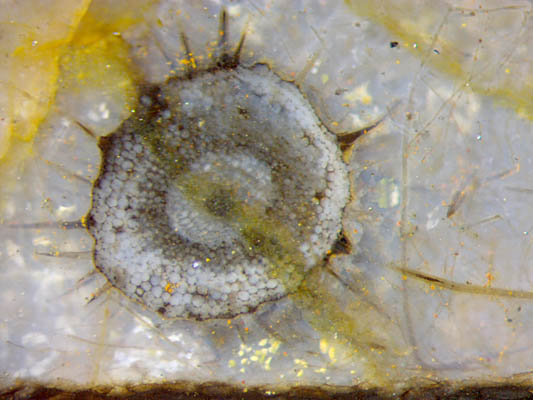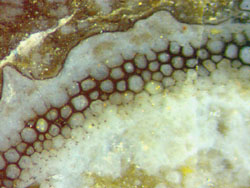| Aglaophyton ( = Rhynia major) twice re-named |
| Most
common plant in the Rhynie chert, cause of some confusion and errors up to now, unique creeping mode, shoots about 4mm across, forking, often with "hollow straw" aspect owing to persistent fraction of tissue; spindle-shaped twisted sporangia at the top. |
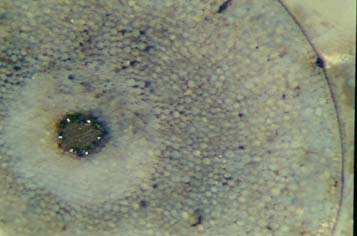 |
